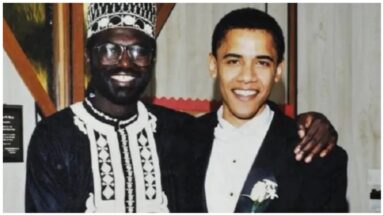Ballet’s aristocratic origins and an early association with opera mean that it remains wedded to a Euro-classical ethos. Certain ideas about it still persist ― that only an expensive cultural education can unlock its meaning and that it belongs in gilded venues accessed only by the elite. Then there’s the unmistakable race-signaling; despite documenting the decline of ballet in the late 1800s and showing us how terribly dancers suffered at the hands of predatory male patrons, French artist Edgar Degas’ paintings have bypassed their nightmarish context, at least in the popular imagination. Today these instantly recognizable scenes are visual shorthand for everything ballet embodies ― beauty, pristineness, perfection ― all of it encoded as whiteness.
Twitter Rips Trump Over Super Bowl Ad Featuring Alice Marie Johnson
Even today, ballet prizes the physical and emotive attributes that set European nobility apart from commoners ― poise, daintiness, adherence to etiquette and hierarchy, erectness of carriage. So it seems that ballet and whiteness are inseparable, to be divorced from each other at a cost no less than the extinction of the form itself. Some stakeholders reinforce this idea by favoring homogeneity, claiming a Black dancer in the corps could throw off the symmetry needed for pleasing optics. Others ostensibly reject Black dancers for having what they say are unsuitable contours. The cumulative impact of these beliefs is felt hardest by aspiring dancers of color.
Source: How Ballerinas Of Color Are Changing The Palette Of Dance



Recent Comments